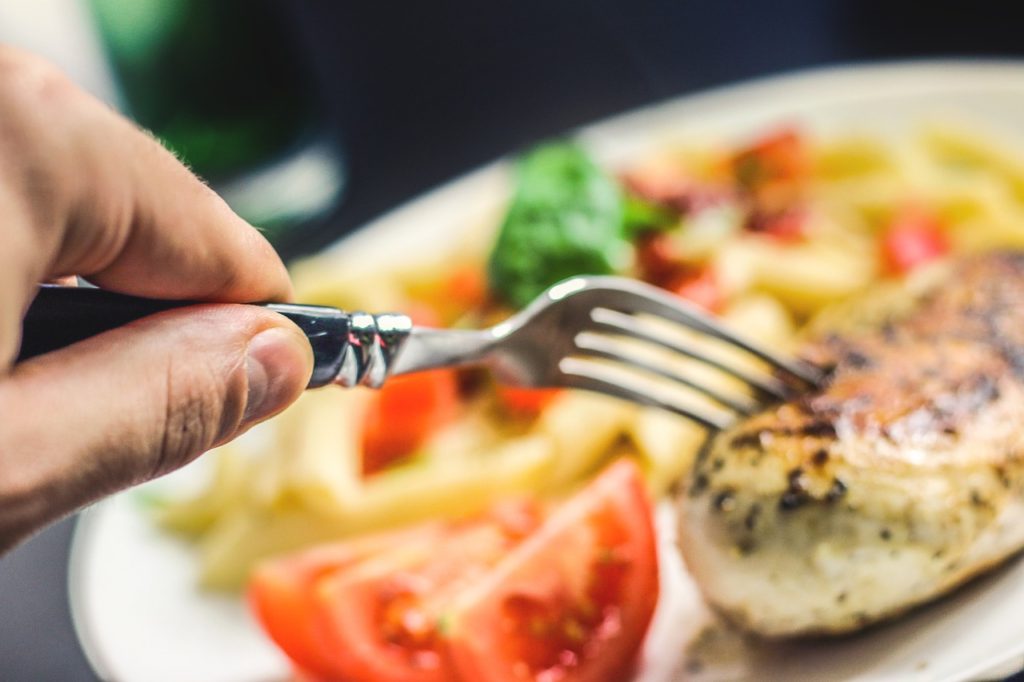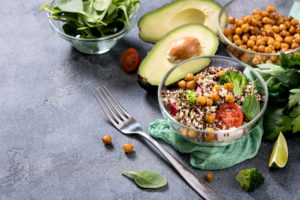Adequate amounts of protein in your diet are necessary for many reasons. In addition to just helping you feel full, protein is needed for your hair and skin, to reduce cravings and to help build muscles. Here are some tips for finding the major sources of protein.
Free Report: 15 Foods To Eat Before & After Your WorkoutsHow Do You Choose The Major Sources of Protein?
Before you choose your protein sources, consider if you have any dietary restrictions or sensitivities. Maybe you’re on a vegetarian diet, so you know not to even bother with meat and fish. Or you tend to feel sick with too many beans and lentils, so you don’t want too many of those in your diet. It doesn’t necessarily have to be something you’re allergic to, but if you know it doesn’t sit well with your stomach, write it down so you don’t even bother with it when it comes time to adding major sources of protein to your diet.
Keep it Simple With Meat, Fish, and Poultry
If you’re a meat eater, this is probably where you’ll start when it comes to choosing your protein sources, and also contains some of the highest amounts of protein. For example, meat and poultry (beef, chicken, and turkey) has between 14 grams of protein and 28 grams of protein per serving. While fish and seafood has between 14 grams of protein and 22 grams of protein per serving size. This includes canned tuna!
As you can see, it is really easy to increase your protein with these types of foods.
Eggs and Dairy
The next category of protein-rich foods includes your eggs and dairy. This is great because even if you’re a vegetarian or you simply don’t like eating a lot of meat and seafood, you still have a lot of amazing ways to get your protein.
Eggs – You’ll get about 6 grams of protein per full egg. Keep in mind this includes the egg white and yolk.
Milk – There is about 8 grams of protein per cup, but look out for other varieties of nut milks that might contain more protein.
Greek Yogurt – This is very high with about 17 grams of protein for one serving. This is close to the amount you get in fish or poultry!
Cottage Cheese – The star of the show with around 22 grams of protein in one cup!
Plant-Based Sources of Protein
It’s good to add some plant-based sources of protein to your diet, whether you are following a plant-based diet or not. They are very easy to add as snacks, to top salads, or just have on the side of your meals. While there are many others, here are some of our favorite plant-based protein sources:
Chickpeas – For ½ cup serving of chickpeas, you can get around 7 grams of protein.
Quinoa – For a cup of quinoa, you are adding approximately 8 grams of protein to your day.
Nuts and seeds – You can get 5-6 grams of protein with ¼ cup of most nuts and seeds.
Edamame – This is a great addition since you get 17 grams of protein for one cup of edamame.
You of course can also get some protein with beans and lentils.
How Much Protein Should You Eat?
Determining how much protein you need varies by your gender, age, body size, activity level, and health goals. The USDA recommends a minimum of 46 grams of protein per day for women and 56 grams of protein per day for men. But these are the recommended bare minimums your body needs to avoid deficiencies. These daily minimums are meant for a person of moderate activity level and average weight who is trying to maintain their status.
If you’re trying to lose weight, and especially if you’re exercising regularly as a part of that weight loss strategy, then you’ll want to eat more protein than these minimum levels. To determine how much protein you need, start with your current body weight. Divide that by two.
If you’re very active and trying to build lean muscle while also losing weight, your answer is equal to the grams of protein you should be aiming to eat each day. If you’re moderately active but trying to lose weight, multiply that number by 0.75 to determine your daily protein intake in grams.
Therefore, someone who weighs 200 pounds would aim to eat a maximum of 100 grams of protein per day if they are very active, work out a lot, or are in training. That same person should only consume about 75 grams of protein per day if their activity level is more moderate.
If you’re not the kind of person who counts grams of anything, you may want to consider a different approach. For each meal or more substantial snack you eat, a good rule of thumb for high-protein weight loss is eat no more than 30% of your calories from protein, less than 25% from healthy fats, and the remainder of your calories should come from carbohydrates.
15 Foods To Eat Before & After Your Workouts
Your body also needs a certain kind of nutrition in each stage of an exercise workout. People are often amazed at how small dietary changes can reap huge results with their fitness goals. Whether you want to build muscle or improve your cardio performance, check out this free report,15 Foods To Eat Before & After Your Workout. It provides details on the foods and major sources of protein you should eat to help you achieve better nutrition and a new personal best.



